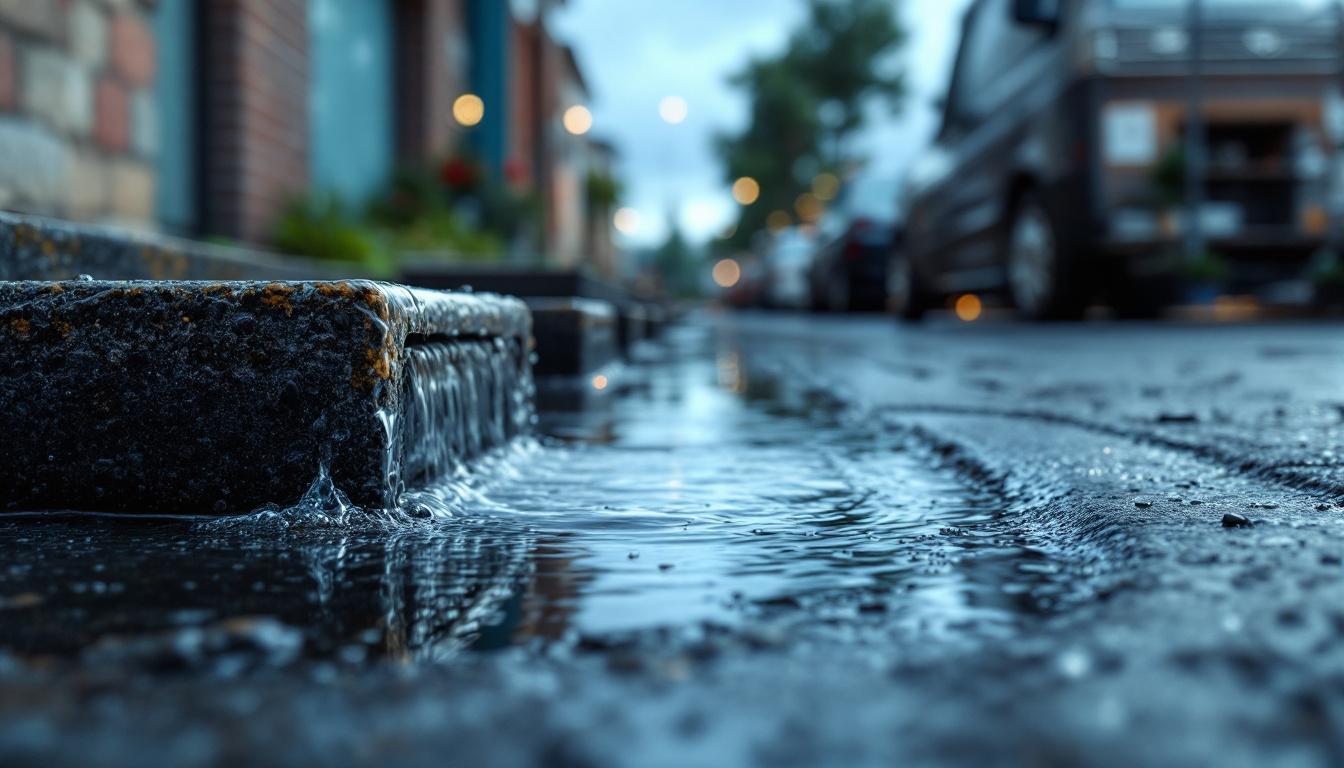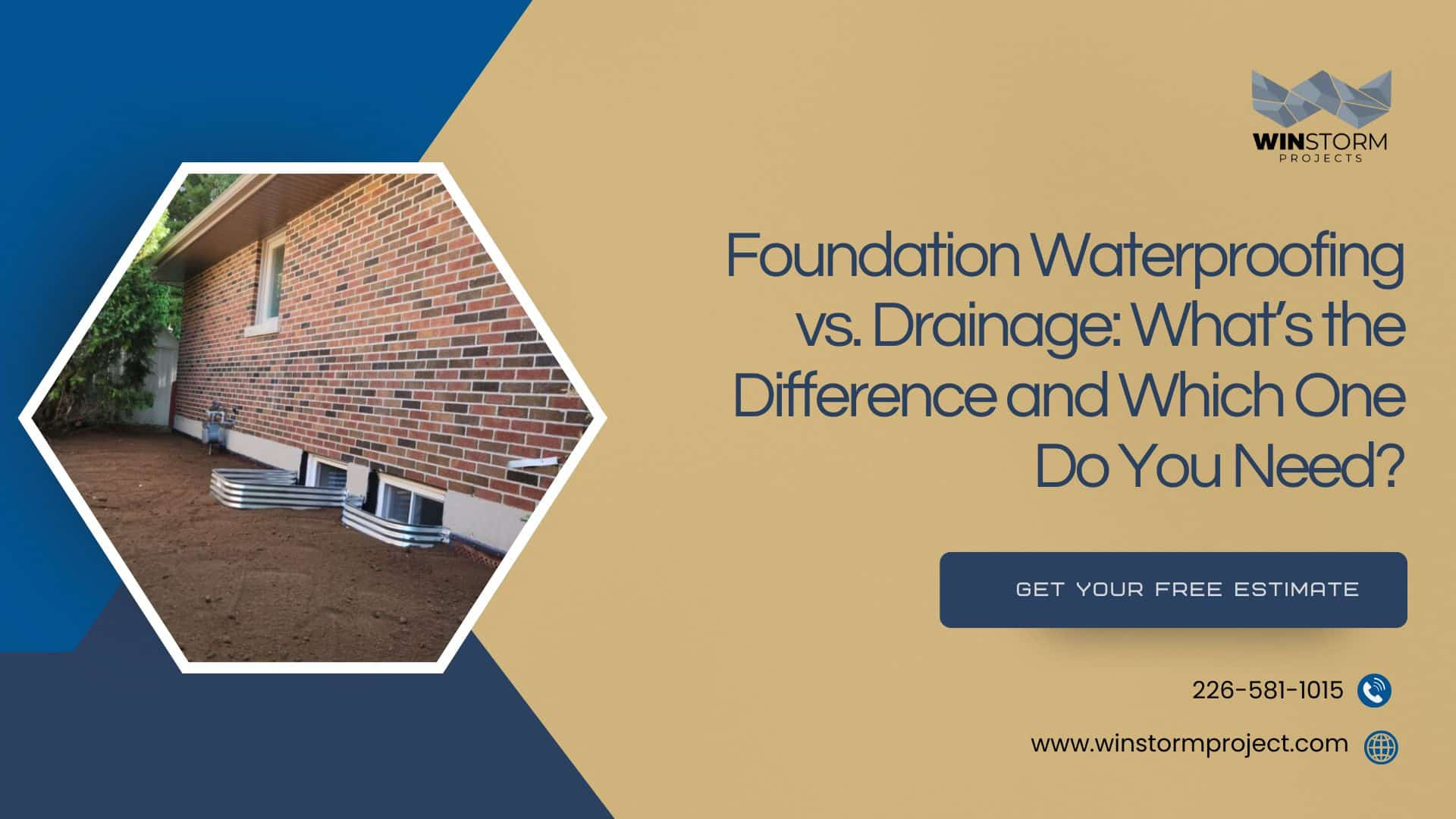Water is a powerful force that can silently wreak havoc on our homes. Foundation waterproofing is crucial for protecting our properties from moisture damage, which can lead to costly repairs and health risks like mould growth. Many people confuse it with drainage solutions, but they serve different roles in safeguarding our homes.
By understanding the importance of exterior foundation waterproofing, we can take proactive steps to prevent water intrusion. This article will investigate into effective waterproofing solutions, helping us make informed decisions for our basements, patios, and retaining walls. Let’s explore how we can keep our homes safe and dry.
Overview Of Foundation Waterproofing
Foundation waterproofing protects structures from water intrusion. We carry out exterior waterproofing solutions like membranes, coatings, and sealants. These methods stop moisture buildup in walls, preventing damage and mould growth.
Signs of water damage include wet basements, cracks in walls, and excessive moisture. Recognising these indicators early allows us to fix exterior leaks efficiently. Our residential exterior waterproofing services ensure effective protection against flooding and leaks.
We offer waterproofing solutions tailored for Ontario’s climate. Home exterior waterproofing safeguards against harsh weather and soil conditions. Our team collaborates with clients to assess their needs and recommend appropriate measures for long-lasting results.
Key Differences Between Foundation Waterproofing & Drainage
Foundation waterproofing and drainage serve distinct roles in protecting our properties. Foundation waterproofing blocks water from entering foundation walls, using methods like membranes and sealants. This process prevents moisture buildup in walls, reducing signs of water damage, such as leaks and mould growth.
Drainage directs water away from our properties. Systems like French drains and channel drains manage water flow, addressing standing water and reducing hydrostatic pressure. These solutions ensure optimal yard drainage, preventing flooding during heavy rain.
Choosing the right method depends on our specific water issues. For example, exterior waterproofing suits homes with moisture intrusion concerns, while effective drainage solutions work best for addressing poor site management and world grading. Investing in both strategies creates a comprehensive approach to maintaining dry basements and sound foundations.
Signs You Need Foundation Waterproofing
We recognise several signs indicating the need for foundation waterproofing. Each sign reflects potential problems that require immediate attention.
- Cracks in Basement Walls & Floors
Cracks appear small but can lead to significant leakage. Monitoring these cracks helps prevent larger issues.
- Musty Smell & Mold Growth
A musty smell often signals moisture buildup. Mold growth poses health risks and indicates air quality issues.
- Standing Water or Damp Basement Floors
Water pooling on the floor signals a lack of proper waterproofing. This condition frequently leads to water seeping through the walls.
- Peeling Paint & Efflorescence
Peeling paint or white, chalky deposits on walls indicate moisture intrusion. Addressing these issues early prevents further damage.
Awareness of these signs helps us maintain dry basements and sound foundations. Seeking professional waterproofing services ensures homes remain protected from water damage.
Signs You Need a Drainage System

We recognise several signs indicating the need for a drainage system in your property. These signs reflect potential water issues requiring immediate action.
- Water pooling near foundation
Water pooling near the foundation suggests improper drainage, leading to erosion and foundation weakening.
- Basement flooding after rainfall
Basement flooding after rainfall shows excessive water runoff, signalling drainage failure.
- Soil erosion and world damage
Soil erosion and world damage result from poor yard drainage, causing uneven soil shifts and landscaping issues.
- Water stains on foundation exterior
Water stains on the foundation exterior indicate prolonged exposure to pooling water, signalling possible moisture problems.
Recognising these signs early helps us carry out effective waterproofing solutions, ensuring the integrity of your home.
Best Foundation Waterproofing & Drainage Methods
Effective foundation waterproofing and drainage methods protect properties from moisture damage. We focus on strategies that address specific needs for residential and commercial buildings in Ontario.
Foundation Waterproofing Methods
- Waterproofing membranes: Apply long-lasting membranes to exterior foundation walls. Membranes create a barrier against moisture buildup in walls.
- Drain boards: use drain boards to redirect water away from foundations. This technique prevents pooling and reduces pressure on walls.
- Sealants: Apply sealants on small cracks in concrete. Sealants help to prevent water intrusion and ensure a dry basement.
Drainage System Types
- French drains: We install French drains to control underground water flow. These pipes redirect water away from foundations, reducing the risk of flooding.
- Swales & grading adjustments: We carry out swales and adjust grading to manage surface water. These solutions promote effective drainage around properties.
- Sump pump installations: We install sump pumps to remove accumulated water from basements. Sump pumps effectively prevent damp conditions and water damage.
Our expertise ensures that each solution matches your property’s unique conditions. For optimal results, combining waterproofing with drainage systems is essential in maintaining a dry, safe environment.
Choosing a Waterproofing & Drainage Contractor Near You
Selecting a contractor for waterproofing and drainage requires careful consideration. Look for experience and past project success in exterior waterproofing. Contractors with a strong history demonstrate reliability and expertise. Confirm that they specialise in both waterproofing and drainage, ensuring comprehensive solutions.
Check for warranties on their waterproofing services. Warranties provide reassurance of quality and commitment. Assess customer reviews and ratings for insights into their service quality. Identify companies that are known for addressing common signs of water damage, like basement leaks and moisture buildup in walls.
If you search for “waterproofing services near me,” include local expertise in your criteria. Local contractors understand regional climate and soil conditions, essential for effective strategies. Companies labelled as the best exterior waterproofing in Guelph or Kitchener often offer proven methods.
Verify the types of waterproofing solutions they provide. Ensure they utilise advanced technologies, such as exterior foundation waterproofing and weeping tile systems. Prioritising these factors leads to informed decisions and effective outcomes for our properties.
Conclusion
Keeping your home safe from water damage starts with understanding the difference between foundation waterproofing and drainage—and knowing when you need one or both. Whether it’s sealing cracks, installing weeping tiles, or improving grading, each method plays a key role in protecting your basement and foundation.
By staying alert to early warning signs like musty smells, peeling paint, or pooling water, you can take action before small issues turn into major repairs. And when you’re ready, working with experienced local contractors ensures you get the right solution for your specific conditions.
Frequently Asked Questions
How does waterproofing differ from drainage?
Waterproofing blocks water from entering foundation walls, preventing moisture buildup. In contrast, drainage systems manage water flow away from the property to prevent flooding and reduce pressure on foundation walls.
What are common signs that a foundation needs waterproofing?
Signs of necessary waterproofing include cracks in basement walls, musty smells, standing water, damp floors, and peeling paint. Recognising these early can help prevent further damage.
What methods are used for foundation waterproofing?
Common waterproofing methods include applying membranes to exterior walls, using coatings and sealants, and installing drain boards to redirect water. Each method aims to keep the foundation dry and protected.
Why is it essential to combine waterproofing and drainage?
Combining waterproofing with drainage ensures comprehensive protection. While waterproofing keeps water out, drainage systems effectively manage water flow, reducing the risk of flooding and maintaining a sound foundation.
Do I need both foundation waterproofing and drainage?
Yes, in most cases, they work together to prevent water damage.
What’s the best waterproofing method for basements?
Exterior waterproofing membranes provide the best long-term solution.
How much does waterproofing cost in Guelph?
Costs vary depending on the extent of the damage and the method used. Contact Winstorm Projects for a free quote

